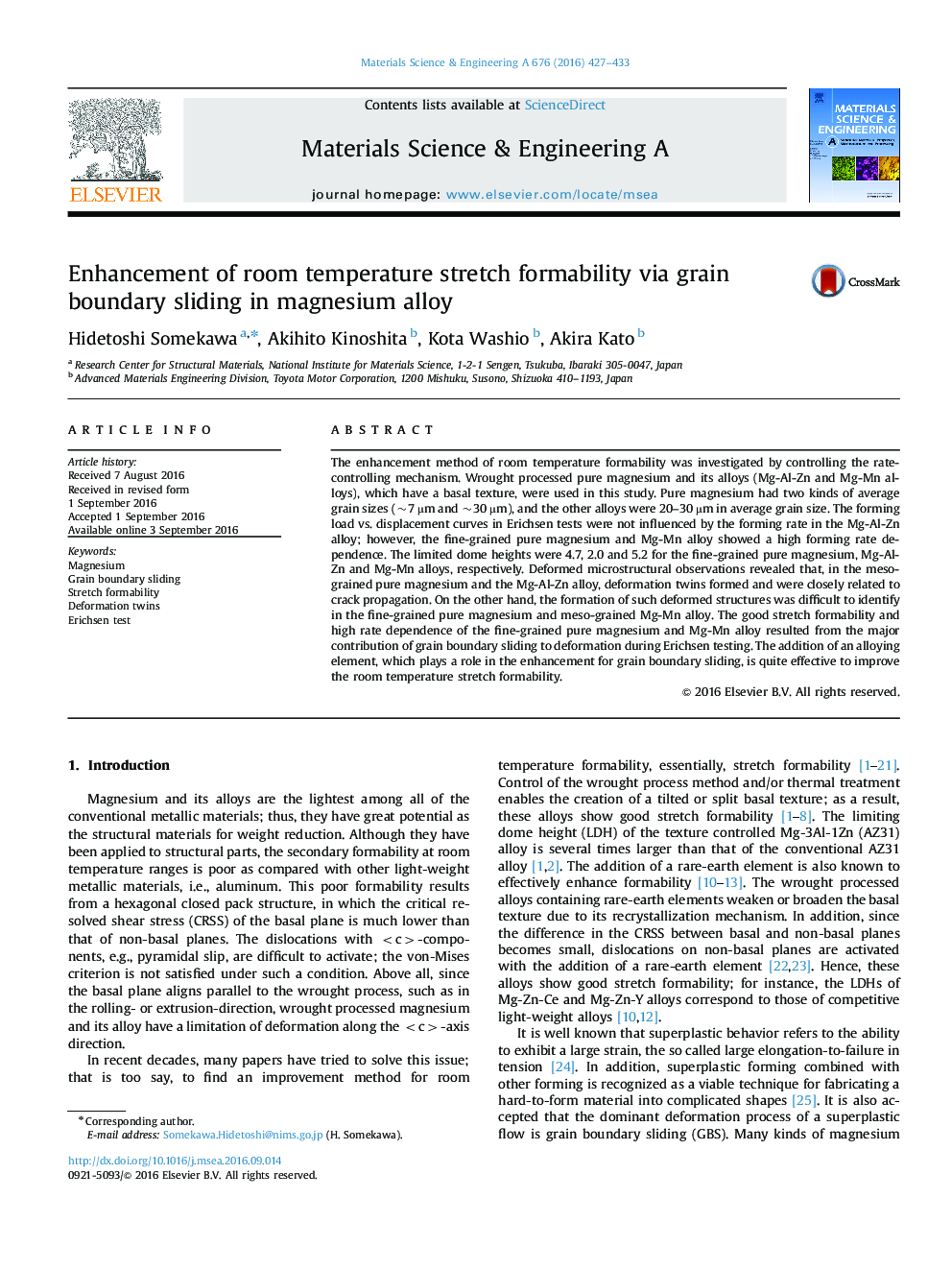| Article ID | Journal | Published Year | Pages | File Type |
|---|---|---|---|---|
| 7974800 | Materials Science and Engineering: A | 2016 | 7 Pages |
Abstract
The enhancement method of room temperature formability was investigated by controlling the rate-controlling mechanism. Wrought processed pure magnesium and its alloys (Mg-Al-Zn and Mg-Mn alloys), which have a basal texture, were used in this study. Pure magnesium had two kinds of average grain sizes (~7 µm and ~30 µm), and the other alloys were 20-30 µm in average grain size. The forming load vs. displacement curves in Erichsen tests were not influenced by the forming rate in the Mg-Al-Zn alloy; however, the fine-grained pure magnesium and Mg-Mn alloy showed a high forming rate dependence. The limited dome heights were 4.7, 2.0 and 5.2 for the fine-grained pure magnesium, Mg-Al-Zn and Mg-Mn alloys, respectively. Deformed microstructural observations revealed that, in the meso-grained pure magnesium and the Mg-Al-Zn alloy, deformation twins formed and were closely related to crack propagation. On the other hand, the formation of such deformed structures was difficult to identify in the fine-grained pure magnesium and meso-grained Mg-Mn alloy. The good stretch formability and high rate dependence of the fine-grained pure magnesium and Mg-Mn alloy resulted from the major contribution of grain boundary sliding to deformation during Erichsen testing. The addition of an alloying element, which plays a role in the enhancement for grain boundary sliding, is quite effective to improve the room temperature stretch formability.
Related Topics
Physical Sciences and Engineering
Materials Science
Materials Science (General)
Authors
Hidetoshi Somekawa, Akihito Kinoshita, Kota Washio, Akira Kato,
